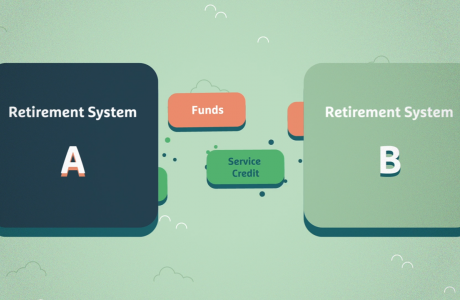As a member of CCCERA, you may be eligible for the benefits of
reciprocity. Reciprocity is an agreement among public defined
benefit retirement systems to allow members to move from one
public employer to another public employer within a specific time
limit without losing some valuable privileges related to your
retirement benefits. There is no transfer of funds or
service credit between retirement systems when you establish
reciprocity. You become a member of both systems and are subject
to the membership obligations and rights of each system (for
example, minimum retirement age may vary between systems), except
as modified by the reciprocity agreement. You must apply to
retire from each system separately, and you will receive separate
retirement allowances from each system. You must retire on the
same date from each public retirement system participating in a
reciprocal agreement for all benefits of reciprocity to apply.
Reciprocity Benefits
The following benefits and requirements apply to CCCERA members
who make a qualified move between reciprocal retirement
systems.
-
Legacy Benefit Tier: The California Public
Employees’ Pension Reform Act of 2013 (PEPRA) requires new
benefit tiers for new members on or after January 1, 2013.
Reciprocal members who were in a legacy (pre-PEPRA) tier with a
prior reciprocal employer will be eligible for a legacy tier
with CCCERA.
-
Member Contribution Rate Based on Age at Entry (Legacy
Tiers Only): Retirement formulas for CCCERA legacy
tier members are based on age at entry; with a lower age at
entry generally meaning a lower contribution rate. CCCERA uses
the age at entry of the first reciprocal system to determine
the contribution rate.
-
Highest Final Compensation: CCCERA will
compute your final average compensation based on the
highest rate of pay under any system, as long as you retire on
the same date from all systems. Systems will use either a 12-
or 36-month consecutive highest final compensation depending on
benefit tier.
-
Qualification for Benefits: Service earned
under all reciprocal systems may be used to meet each system’s
vesting and retirement eligibility requirements.
Reciprocity Requirements
When changing retirement systems, you must satisfy several
statutory conditions, as follows, in order to receive the full
benefits of reciprocity:
-
Maintain Membership: You must continue
membership in the first retirement system by leaving your
service credit and contributions (if any) on deposit.
-
Movement to a New Reciprocal System: You must
have a date of membership in the new system within six months
of leaving the old system. The six months is extended to one
year if termination was due to lay off because of a lack of
work, a lack of funds, or a reduction in workforce.
-
No Overlapping Service: You must discontinue
your employment relationship from the first system before
entering employment with the subsequent system.
-
Concurrent Retirement between Reciprocal
Systems: In order to receive full reciprocal benefits,
you must retire on the same date from both or all systems by
submitting a retirement application in accordance to the rules
and regulations applicable to each system.
-
Exceptions and Restrictions: Certain
exceptions and restrictions may apply. Eligibility for
reciprocity is determined by the retirement laws in effect at
the time of movement between retirement systems
Important Restrictions
-
Concurrent Employment: Reciprocity does not
apply when your employment under the first retirement system
overlaps your employment under the new system. For the benefits
of reciprocity to apply, you must terminate employment under
the first system prior to entering employment with the
subsequent system. Reciprocity may not be established even if
the overlapping time is due only to using vacation or leave
time with the first employer while becoming member of the new
system.
-
Refund Restriction: Some retirement systems
may not allow you to withdraw your member contributions while
you are employed in a position covered by a reciprocal
retirement system.
Reinstatement From Retirement
If in the future you reinstate to active employment in a
CCCERA-covered position and have retired under reciprocity, there
is no provision in the law to allow you to apply reciprocal
rights to your subsequent retirement since you will no longer be
retired from both systems on the same date. If you have any
questions regarding reciprocity, including the requirements,
restrictions or benefits of reciprocity, contact our office.



